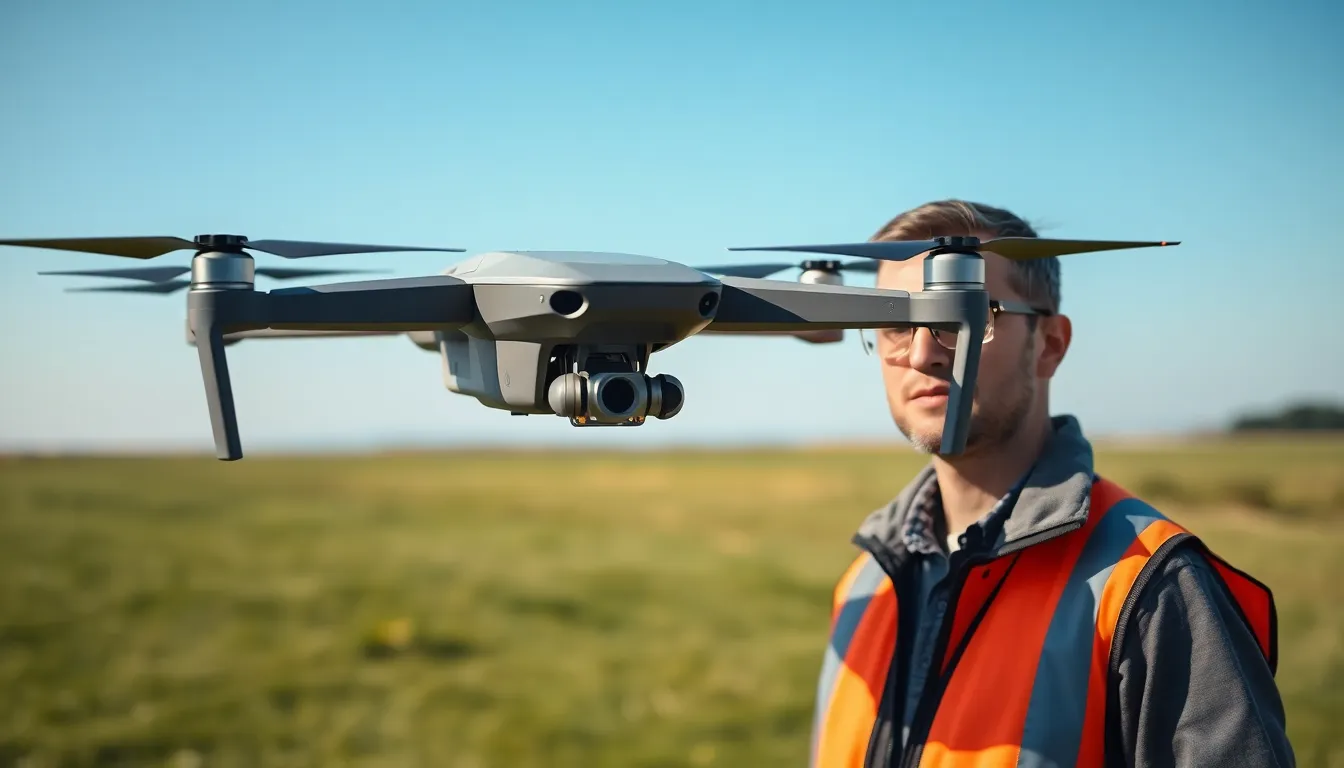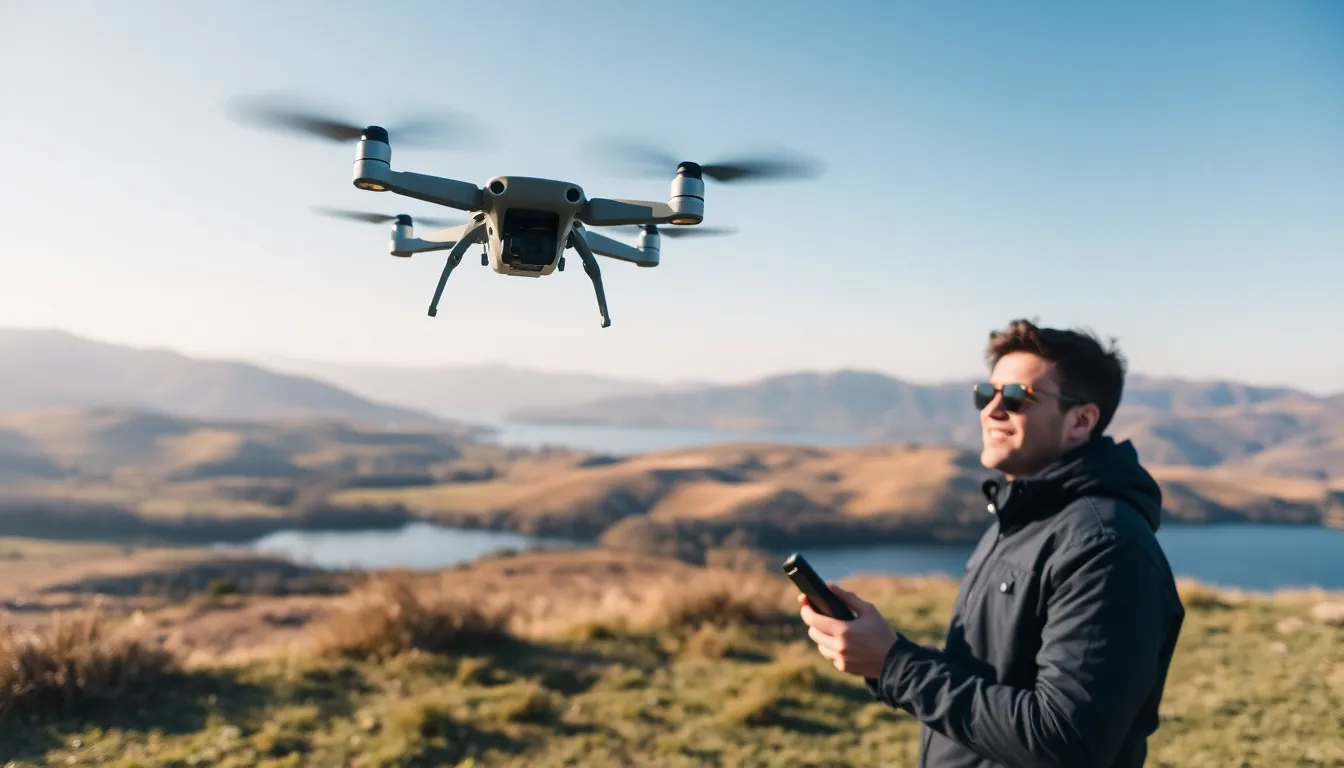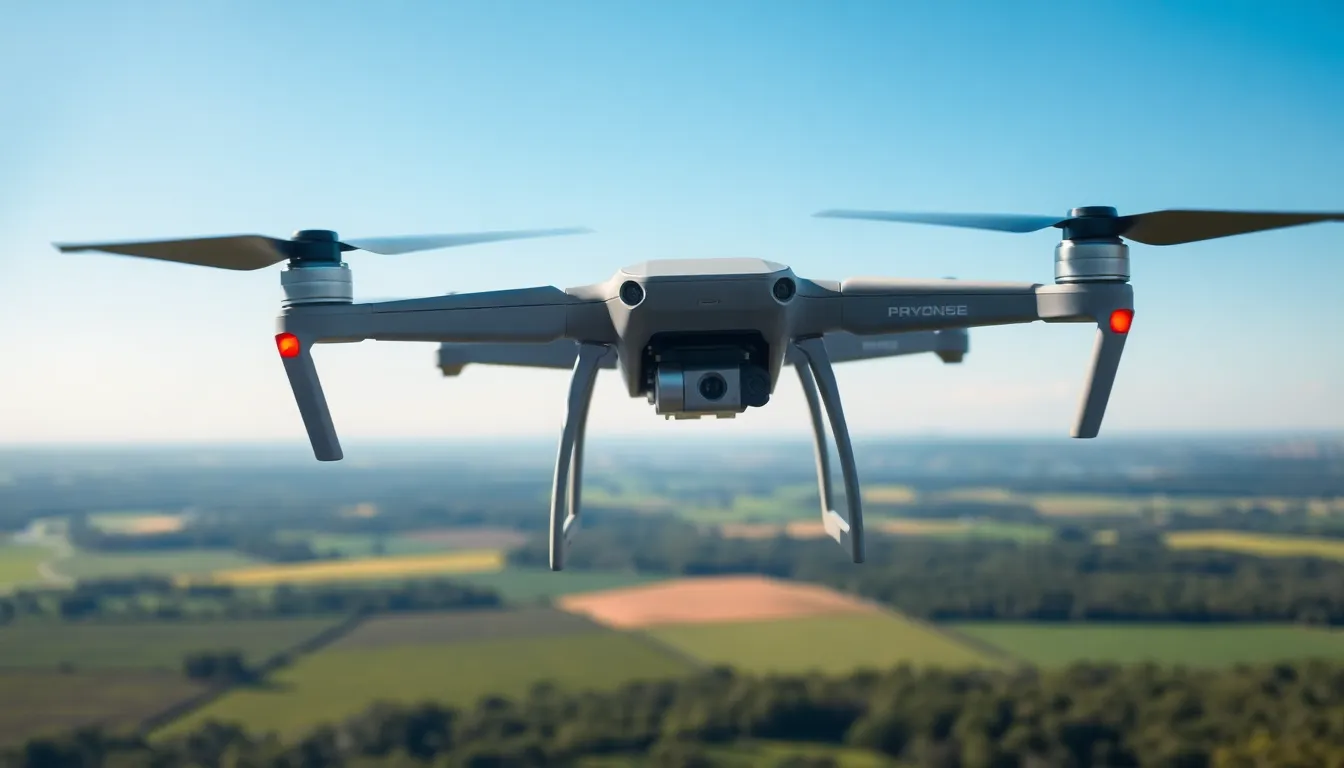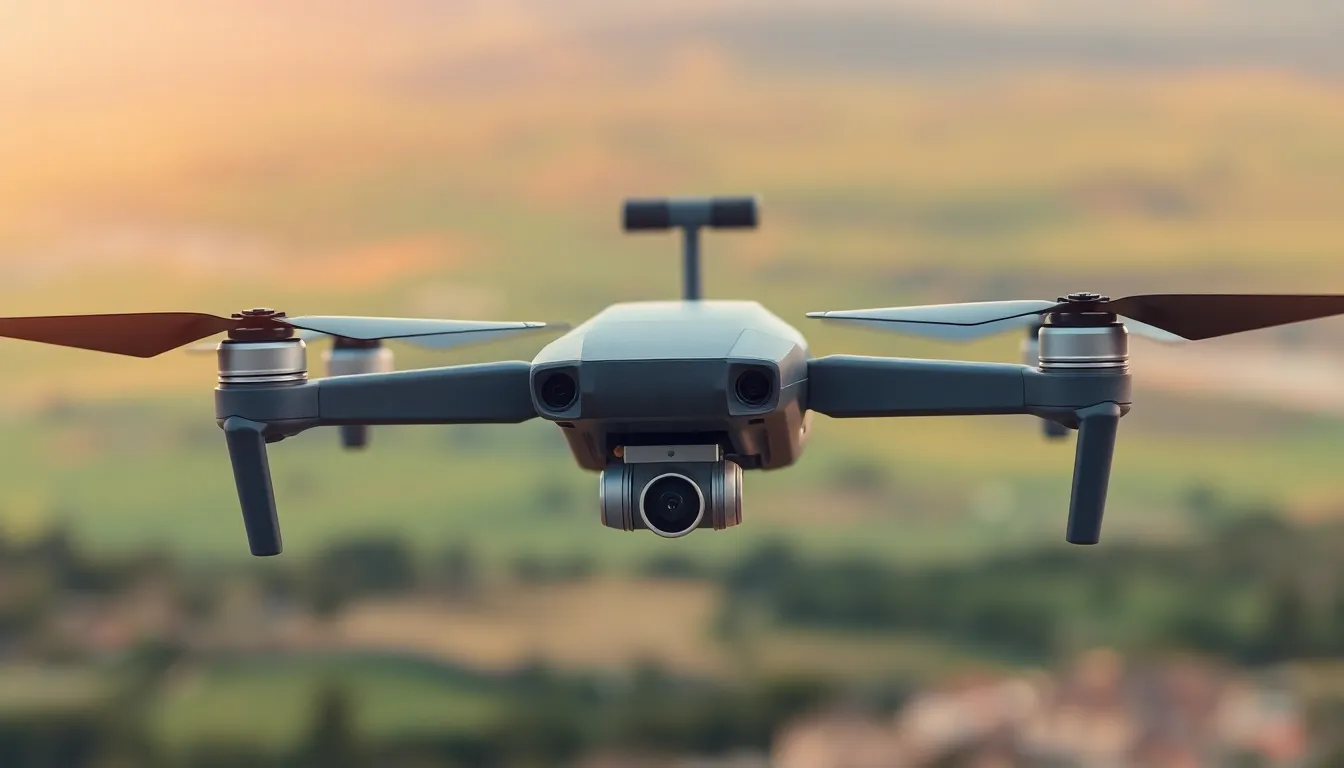Drones are soaring to new heights, quite literally. Whether they’re capturing breathtaking aerial shots or delivering snacks to your doorstep, these flying wonders have become indispensable. But with great altitude comes great responsibility. What happens when that high-flying gadget takes an unexpected nosedive? Enter drone insurance coverage, the superhero your UAV never knew it needed.
Table of Contents
ToggleOverview of Drone Insurance Coverage
Drones have gained significant traction in various sectors, necessitating comprehensive insurance coverage. Protection against potential liabilities and damages remains essential for operators.
Importance of Insurance for Drones
Insurance for drones safeguards against financial loss resulting from accidents and malfunctions. Operators face risks like property damage, bodily injury, and legal claims. Drones also pose challenges, such as airspace regulations and potential collisions, making insurance vital. Many regulatory bodies require liability coverage for commercial operations. Operators mitigate risks by securing insurance, ensuring compliance and enhancing peace of mind.
Types of Risks Covered
Drone insurance primarily covers three key risk categories: liability, damage to the drone, and personal injury. Liability coverage addresses costs associated with third-party claims. Damage protection includes repairs or replacement of the drone due to accidents or theft. Personal injury coverage protects against claims related to injuries inflicted by the drone during operations. Each type offers distinct benefits, providing operators with comprehensive risk management in an evolving landscape.
Types of Drone Insurance Coverage

Understanding different types of drone insurance coverage ensures operators select suitable protection for their needs. The main categories include liability insurance, hull insurance, and coverage specific to personal or commercial use.
Liability Insurance
Liability insurance protects against claims arising from damage to third parties or property. This coverage is crucial for commercial drone operators, as regulations may mandate its inclusion. Accidents leading to injuries or damage can result in significant financial loss. Liability insurance covers legal fees, property damage, and medical costs. Operators often find it provides peace of mind, knowing they’re shielded from potential litigation.
Hull Insurance
Hull insurance covers physical damage to the drone itself. This includes losses caused by crashes, collisions, or theft. Operators investing in expensive drones benefit from this financial protection. Hull insurance often encompasses repair costs, ensuring operators avoid hefty out-of-pocket expenses. Different policies may offer varied levels of coverage depending on the drone’s value and the specific risks faced during operation.
Personal Use vs. Commercial Use Coverage
Coverage for personal use generally differs from that for commercial operations. Personal use insurance typically offers basic liability protection and limited hull coverage. In contrast, commercial use coverage includes extensive liability limits and specialized provisions. Operators should assess their specific needs and the intended use of their drones. Different risks linked to operating commercially further emphasize the importance of tailored insurance. Each type of coverage provides essential protection based on usage scenarios, ensuring that operators remain safeguarded against potential losses.
Factors to Consider When Choosing Coverage
Selecting the right drone insurance coverage involves evaluating several critical factors. These considerations ensure operators make informed decisions tailored to their specific needs.
Type of Drone and Usage
Understanding the type of drone and its intended usage significantly influences insurance options. Commercial drones often require more extensive coverage due to higher risk exposure. Operators using drones for photography, surveying, or delivery may face unique liabilities. Recreational drone users, on the other hand, typically find basic coverage sufficient. Evaluating the drone’s specifications, such as size and capabilities, ensures the chosen policy aligns with operational risks.
Insurance Provider Reputation
Choosing a reputable insurance provider is essential for reliable coverage. Investigate the provider’s history, customer reviews, and industry standing. Established companies often demonstrate better claims handling and customer service. Assessing financial stability helps gauge if the provider can meet future claims. Comparing offerings from multiple insurers aids in selecting one known for supporting drone operators effectively.
Policy Limits and Costs
Policy limits and costs directly impact coverage effectiveness. Detailed examination of the policy limits ensures adequate protection against potential losses. Lower premiums might offer less coverage, while higher premiums often indicate more comprehensive plans. Understanding any deductibles or exclusions helps avoid unexpected costs. Balancing the desired level of protection with budget constraints allows operators to find the right insurance solution.
Claims Process for Drone Insurance
Understanding the claims process is essential for drone operators seeking to maximize their insurance coverage.
Steps to File a Claim
Filing a claim involves a few straightforward steps. First, document the incident with photographs, videos, and written notes detailing the circumstances. Next, contact the insurance provider immediately to report the claim. Afterward, fill out the required claim forms accurately, providing all necessary information about the drone and the incident. Follow the specific instructions given by the insurance claims adjuster, as this can expedite the process. Lastly, keep records of all communication and submitted documents for reference, ensuring that no details are overlooked.
Common Challenges in Claim Approval
Claim approval can present several challenges for drone operators. One common issue is insufficient documentation, which can delay or deny a claim. Likewise, unclear policy terms can create confusion regarding coverage limits and exclusions. Additionally, the insurance company’s assessment of the drone’s condition and incident circumstances may differ from the operator’s perspective. Disputes can arise if there’s a lack of evidence supporting the operator’s claims. Awareness of these potential hurdles beforehand can help operators navigate the process more effectively.
Drone insurance coverage is essential for operators navigating the growing landscape of aerial technology. As drones become integral to various industries the need for tailored insurance solutions has never been more critical. With the right coverage in place operators can protect themselves from financial losses associated with accidents and legal claims.
Understanding the nuances of different policies and their specific benefits allows operators to make informed decisions. By prioritizing adequate insurance coverage they can ensure compliance with regulations while gaining peace of mind. Ultimately investing in comprehensive drone insurance is a proactive step towards a secure and successful operation in the skies.





